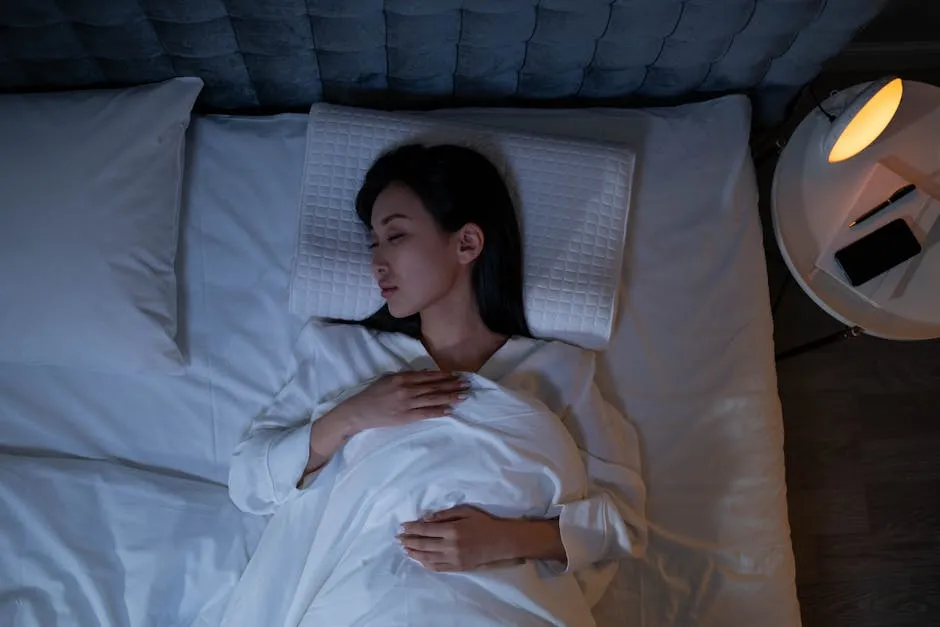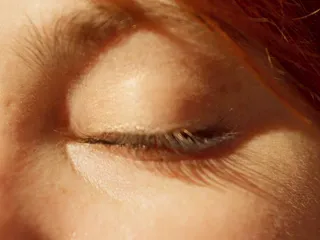
Why Do Some People Sleepwalk?
Introduction
Sleepwalking, also known as somnambulism, is a fascinating phenomenon. It involves performing activities while in a state of sleep, often without any memory of the event. Approximately 7% of the population experiences sleepwalking at some point in their lives. This disorder is more prevalent in children, particularly between the ages of 4 and 8. However, about 1.5% of adults continue to sleepwalk into adulthood.
But why do some people sleepwalk? This article aims to shed light on the reasons behind sleepwalking. We will discuss various causes, potential risks associated with this curious behavior, and available treatment options. Understanding sleepwalking requires a closer look at how our bodies and minds function during sleep.
So, grab a cup of coffee (or maybe some Chamomile Tea for a restful night), and let’s unravel this mystery together!

Understanding Sleepwalking
Definition of Sleepwalking
Sleepwalking is a sleep disorder that occurs during non-rapid eye movement (NREM) sleep. It typically happens within the first few hours after falling asleep. During these episodes, individuals may get out of bed and perform various activities. These activities can range from simple behaviors, like sitting up or walking around, to more complex actions, such as cooking or even driving.
Common signs of sleepwalking include a glazed expression, clumsiness, and a lack of responsiveness to external stimuli. Most sleepwalkers have no memory of their actions upon waking. They might wake up in unexpected places, often confused and disoriented.

Prevalence and Demographics
While sleepwalking can affect anyone, children are the most susceptible. Studies suggest that around 20% of children experience sleepwalking at least once. Fortunately, many outgrow the behavior by their teenage years. However, about 1% to 1.5% of adults may continue to experience sleepwalking episodes.
Genetics may also play a role in sleepwalking. If someone in your family has a history of sleepwalking, you might be more likely to experience it yourself. Family ties can create a curious link, making sleepwalking not just a personal issue, but one that can run in families.
Speaking of family ties, if you’re looking for a way to track sleep patterns, consider using a Sleep Journal. It can help identify patterns and triggers in your sleepwalking episodes, giving you insights to share with your healthcare provider.

Causes of Sleepwalking
Sleepwalking arises from a combination of biological, environmental, and psychological factors. Each of these influences plays a part in determining why some individuals experience this perplexing behavior.
In summary, sleepwalking is more than just a quirky nighttime adventure; it’s a complex interaction of genetics, sleep stages, and various triggers. As we continue our exploration, we’ll uncover the specific causes behind this curious phenomenon and how they can impact both children and adults alike.

Biological Factors
Genetics
Genetics plays a significant role in sleepwalking. If a family member has a history of sleepwalking, chances are you might join the club. Studies show that about 60% of sleepwalkers have a relative who also sleepwalks. This genetic link suggests that certain traits, passed down through generations, could make individuals more susceptible to this quirky nighttime adventure. So, if your great-aunt Edna was known to wander the halls at night, it might be time to watch your step!

Brain Chemistry
Brain chemistry is another key player in the sleepwalking saga. Specifically, neurotransmitters like GABA Supplements help regulate sleep and wakefulness. When GABA levels are out of whack, it can lead to sleepwalking episodes. Think of GABA as the bouncer at a club, keeping the dance floor calm. If the bouncer decides to take a break, the dance floor could get wild, resulting in unexpected movements during sleep. This imbalance can be particularly common in children, whose neurological systems are still developing.

Environmental Factors
Sleep Deprivation
Ah, the classic enemy: sleep deprivation. Lack of sleep can turn anyone into a cranky monster, but for some, it can also trigger sleepwalking. When you skimp on sleep, your brain doesn’t get the rest it needs, which can lead to chaotic sleep patterns. Research indicates that sleep-deprived individuals are more likely to experience sleepwalking episodes. So, if you’ve been burning the midnight oil, it might be time to prioritize those Zzzs.
To assist with sleep quality, you might want to consider a Weighted Blanket. It can provide comfort and help ease anxiety, making it easier to achieve a good night’s rest.

Stress and Anxiety
Stress and anxiety are like party crashers for a good night’s sleep. They can disrupt your sleep patterns, making it easier for sleepwalking to occur. Anxious thoughts can keep your mind racing, even when your body is trying to rest. This heightened state of arousal can lead to episodes of sleepwalking, where your body is active, but your mind is still trying to work out the day’s issues. So, the next time you find yourself wandering the kitchen at 2 a.m., ask yourself: what’s stressing me out?
For those moments when relaxation is needed, consider using an Essential Oil Diffuser. The calming scents can help create a peaceful environment, perfect for winding down after a long day.

Medical Conditions
Associated Disorders
Several medical conditions can contribute to sleepwalking. Disorders like sleep apnea can interrupt your sleep cycle, leading to fragmented rest and increased chances of sleepwalking. Restless legs syndrome (RLS) may also play a part, causing discomfort that disrupts sleep. Chronic migraines can add to the mix, creating a perfect storm for sleep disturbances. If you’re battling these conditions, it’s worth discussing your sleepwalking with a healthcare provider.

Medications
Certain medications can also trigger sleepwalking. Common culprits include zolpidem (Ambien) and some antidepressants. These medications can affect your brain’s neurotransmitters, leading to that nighttime wandering. If you find yourself sleepwalking after starting a new medication, it’s essential to talk to your doctor. They can help evaluate your prescriptions and make adjustments to keep you safely asleep.
In summary, the reasons behind sleepwalking are quite complex. A mix of biological, environmental, and medical factors can contribute to this curious behavior. Understanding these influences can help manage and reduce sleepwalking episodes, leading to more peaceful nights.

Recognizing Sleepwalking Episodes
Symptoms
Sleepwalking can look quite peculiar. People may rise from their beds, eyes wide open but lacking awareness. Their expression often resembles that of someone staring into space—glazed and distant. Movements can be clumsy, as they navigate their environment like a toddler taking their first steps.
You might catch a sleepwalker engaging in bizarre activities. They could be rummaging through the fridge, trying to prepare a midnight snack, or even attempting to leave the house. The fascinating part? They won’t remember any of it upon waking.
Other signs include:
- Sitting up in bed with a confused look.
- Walking around without any direction.
- Inability to respond to questions or external stimuli.
- Lack of coordination, leading to stumbling or awkward movements.
While it may seem amusing, these behaviors can pose risks if they go unchecked. To ensure safety, consider a Sleepwalking Safety Alarm. This can alert you or caregivers if someone starts to wander at night.

Duration and Frequency
Sleepwalking episodes typically last from 30 seconds to 30 minutes. On rare occasions, they may extend longer, leaving the sleepwalker wandering deeper into their nightly adventures.
In terms of frequency, this varies significantly. Some individuals may sleepwalk only once in a blue moon, while others might have episodes several times a week. Children are particularly prone to sleepwalking, often experiencing it during the ages of 4 to 8. As they grow, many outgrow this nocturnal escapade. However, up to 1.5% of adults may still find themselves wandering the night.
Understanding these aspects of sleepwalking is crucial. Recognizing the signs and knowing how often episodes occur can help manage the condition effectively, ensuring safety and peace for both the sleepwalker and those around them.

Medication Options
For those who find sleepwalking episodes disruptive, certain medications may help. Clonazepam and diazepam are two options that doctors might prescribe. These medications belong to a class known as benzodiazepines. They can calm the nervous system, effectively reducing the frequency of sleepwalking incidents.
Clonazepam is often favored for its effectiveness in treating sleep disorders. It can help stabilize sleep patterns and promote deeper sleep, which may prevent episodes. On the other hand, diazepam can also provide similar benefits but is generally used for shorter durations due to its potential for dependence.
However, it’s important to note that medications should not be the first line of defense. They are typically recommended when behavioral modifications alone do not yield results. Consulting a healthcare provider is crucial before starting any medication. They can evaluate individual circumstances and consider any potential side effects or interactions with other drugs.

If you’re looking for natural alternatives to improve your sleep, consider trying Herbal Sleep Aids. They can provide gentle support for achieving restful sleep without the side effects of prescription medications.

When to Seek Medical Help
Some situations warrant professional intervention for sleepwalking. If episodes become frequent—occurring several times a week or multiple times a night—it’s time to consult a healthcare provider. Additionally, if sleepwalking leads to injuries, either to the individual or others, it’s essential to seek assistance.
Another red flag is if sleepwalking disrupts daily life. This could manifest as excessive tiredness during the day or difficulties in personal relationships. If sleepwalking persists into adulthood after previously outgrowing it as a child, medical advice should also be sought.
Overall, understanding when to seek help can lead to better management of sleepwalking. With the right support and guidance, individuals can navigate this perplexing condition more effectively. And while you’re at it, consider investing in a Sleep Sound Machine. It can help create a soothing environment that promotes restful sleep.

FAQs
Is sleepwalking dangerous?
Sleepwalking can pose various risks. While many episodes are harmless, the potential for injury is significant. Sleepwalkers might stumble into furniture, trip down stairs, or even leave the house. In fact, studies reveal that about 58% of sleepwalkers sustain injuries during episodes. To mitigate these risks, creating a safe environment is crucial. You can lock doors and windows, remove sharp objects, and use alarms to alert others if someone is wandering. Therefore, while sleepwalking itself isn’t inherently dangerous, taking precautions is vital for safety.
Can sleepwalking be cured?
Unfortunately, there is no definitive cure for sleepwalking. However, many sleepwalkers find relief through management strategies. Maintaining a consistent sleep schedule, reducing stress, and improving sleep hygiene can significantly decrease the frequency of episodes. In some cases, healthcare providers may recommend cognitive behavioral therapy or medications to help manage symptoms. While a complete resolution may not be possible, many individuals can lead normal lives with effective management.
Should you wake a sleepwalker?
Waking a sleepwalker can be tricky. It might lead to confusion, fear, or disorientation. Instead of startling them, gently guide them back to bed without waking them. This way, you minimize anxiety and ensure they return to sleep peacefully. However, if a sleepwalker is in danger, it’s crucial to wake them to prevent potential harm. Remember, the goal is to keep them safe while avoiding unnecessary stress.
What triggers sleepwalking?
Several triggers can lead to sleepwalking episodes. Common factors include stress, anxiety, and sleep deprivation. Lack of sleep can create a perfect storm for sleepwalking, making it more likely. Additionally, certain medications, such as sedatives and antidepressants, may increase the risk. Environmental changes, like unfamiliar sleeping arrangements or loud noises, can also trigger episodes. Recognizing these triggers can help individuals manage their sleepwalking better and create a conducive sleeping environment.
Please let us know what you think about our content by leaving a comment down below!
Thank you for reading till here 🙂 And if you’re looking to relax even more, how about some cozy Cozy Slippers or perhaps a Relaxing Music CD to set the perfect mood for your sleep.
All images from Pexels




